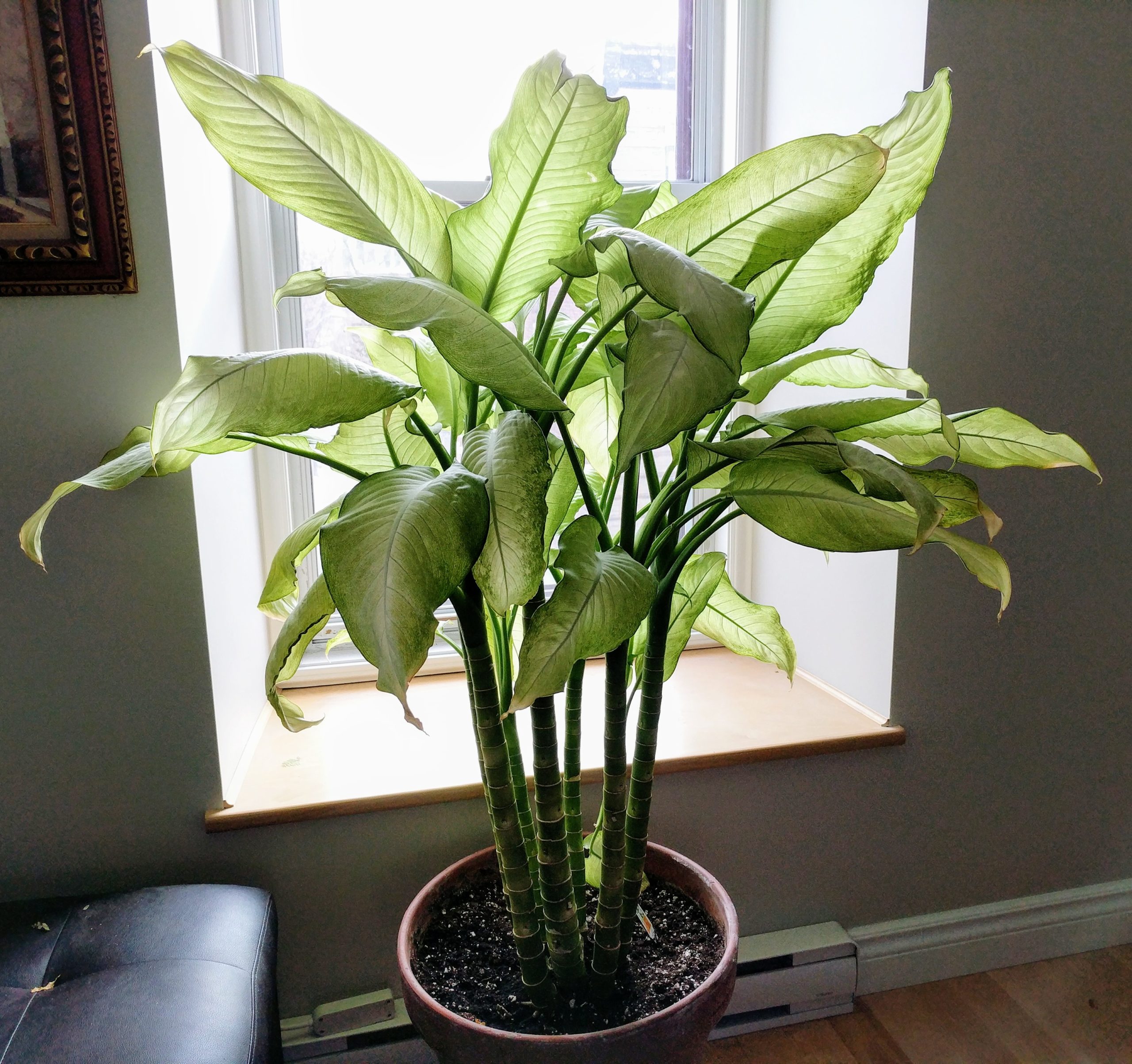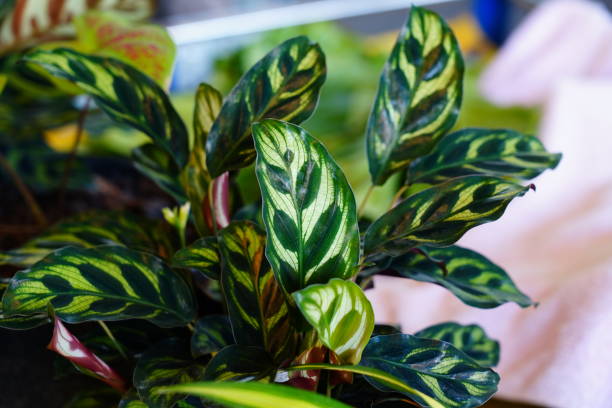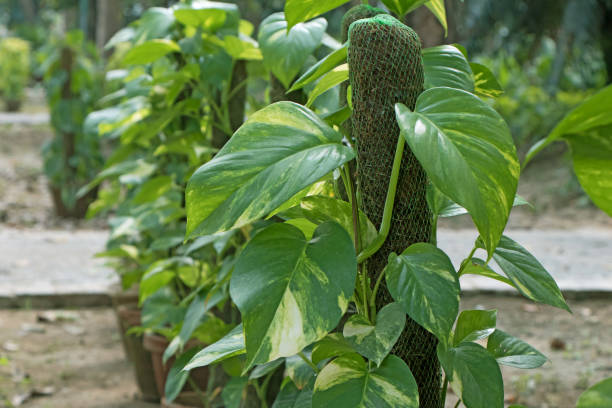Dieffenbachia: Care And How To Grow The Dieffenbachia Plant

Dieffenbachia, also know as Dumb Cane, is an excellent tropical plant. This is an amazing option if you want something like indoor houseplants. The good tolerance levels for the shades make the dieffenbachia care an easy-breezy affair.
The easy dieffenbachia care and growing also make it a great option if you want to begin learning about houseplant care.
In the article below, we will tell you about the various aspects of the dieffenbachia plant. We will also answer some common questions which you might have for dieffenbachia plants.
Dieffenbachia Care – Quick Guide
- Botanical Name: Dieffenbachia
- Origins: New World tropics, South America, West Indies, Mexico, and Argentina.
- Family: Araceae
- Grow Zones: USDA 1- to 12 Hardiness Zones.
- Size: Differ according to varieties’ small – 12 to 24 inches. Tall – upto 6 feet tall.
- Temperature: 70 to 80 Degrees F.
- Light: Medium to direct or high.
- Soil: Houseplant soil or Homemade 1 part perlite and 2 part peat soil.
- Fertilizer: Liquid Houseplant Fertilizer.
How To Care For Dieffenbachia?
The dieffenbachia care as easy as it is a hardy plant and, with minimum care, rewards you with an extended life span.
When it comes to maintenance and requirements, it’s the easiest houseplant to grow. It grows no matter the season or month of the year.
Light
The dieffenbachia plant does well in a shady or semi-sunny location. Thus for lighting conditions, it doesn’t require much sunlight.
However, if you provide it with more light, then it thieves well. In comparison to sunlight, these plants thrive more properly in artificial plant light. The bright light makes its leaves color more green, and lack of light may lead to dullness of a color. It also does well in hot summers in the sun but needs a little protection from noon sun, or it may make the plant look sick.
Thus too much sun will burn its leaves while low light will discolor the leaves. So medium light is the perfect thriving condition of the dieffenbachia plant.
Temperature
This is a houseplant and does well all year round if you provide it with a room temperature of 65 to 75 Fahrenheit. The dieffenbachia plants are not suitable for low temperatures, and they die in low temperatures.
If the temperatures go below 60 Fahrenheit, the growth of this plant slows down. Temperature below 55 Fahrenheit can even damage the plant, so it is an essential part of dieffenbachia care. Thus the best suitable temperature for this plant is medium, which is neither too cold nor too hot.
Water
This plant is from the aroid family and thus likes humidity. So we recommend that you thoroughly water it and let the potting soil dry between the waterings.
So, in dieffenbachia care, it is essential to water the plant often while considering the temperature and other conditions. You must also be careful not to water it too much as it may drown the fleshy roots. It may also lead to making the stems mushy and weaken the growth along with causing rank. For best results, you should also provide it with proper drainage.
Fertilizer
For the best results, you can feed it with liquid plant food during the summers. You need to provide it with a bit of food every time you water it. However, during winters, you should avoid food and instead provide only water.
When you use fertilizer, you should use water-soluble ones with ½ of their strength, for example. You need to use ½ spoon of fertilizer in a gallon of water. You must also be careful about the recommended doses that are put on the packings of fertilizers.
Soil
A potting soil mix, which is used for the care of African violets, is best for dieffenbachia care also.
Some other suggestions that work well with the dieffenbachia are:
- all-purpose type loam one part.
- Vermiculite or perlite
- Peat moss’s one part
However, you must know that all these soil mixes work well when you are planting them on a shady patio.
If you are planting it indoors, then using houseplant potting soil is the ebay option for it. You can also make your own soil by mixing two parts of the peat moss along with 1 part of perlite.
Dieffenbachia Diseases and Pests
Some of the common pests and diseases for the dieffenbachia plant are:
- Spider mites
- Mealybugs
- Erwinia bacteria.
These are some tips for dieffenbachia care, which you are going to need for the best results. One thing which is sure that it will one of the best low maintenance houseplants you ever have.
Common Questions For Dieffenbachia
These are some common question which gardeners and people ask about the dieffenbachia plant:
Is The Dieffenbachia Plant Poisonous?
Yes, it is poisonous, and if eaten or ingested, it can cause inflammation in the throat along with skin irritation.
Why Is It Called “Dumb Cane”?
The term dumb cane has also been known as snake plant in various languages and cultures. This is due to its toxicity, which refers to calcium oxalate toxic sap crystals on its leaves. If eaten or ingested, this plant can lead to throat and tongue inflammation. It can even cause temporary loss of speech if ingested.
Due to these toxic qualities of this plant, it was given to slaves as a punishment and thus the name “Dumb Cane.”
Does The Dumb Cane Flower?
Yes, the dieffenbachia flowers and the flowers look like flowers on monstera deliciosa or calla lily. However, its flowers don’t have any smell of their own.
Once the plant flowers, the central stem part dies but shoots on the sides form. In this way, the plants continue to grow. With time the side shoots mature, and you can use them to propagate and produce new dieffenbachia plants.
What Is The Dieffenbachia Amoena?
The dieffenbachia alone is the most common type of houseplants that people use among various varieties of this plant.
This is the tall species of this plant and grows up to a height of 4 to 5 feet. This variety’s stem supports dark green thick mottled foliage. It has pointed oblong types of leaves that ascend around the canes spirally.
How Many Varieties Are There Of This Plant?
Some of the popular varieties of the dieffenbachia are:
- Dieffenbachia Amoena; is a large variety and grows up to a height of 5 feet.
- Camille
- Camouflage
- Dieffenbachia maculata is also known as ‘Tropical Tiki.’
- Dieffenbachia Seguine. It is one of the most popular varieties of the dumb cane. The dieffenbachia seguine is generally used as an ornamental plant.
- Carina
- Compacta; this is a small variety of the plant.
- Delilah; is also a small variety.
- Honeydew; is one of the most popular indoor dieffenbachia varieties. This is also one of the lowest dieffenbachia care needing plants.
- Mary
- Tropic Snow.
- Sarah
These are some of the most popular varieties of dieffenbachia which people prefer. The most popular use of this houseplant is for ornamental purposes.
Bottom Line
The dieffenbachia is one of the most popular varieties of these houseplants, which people use around the world for ornamental purposes.
The amazing thing about this plant is that it requires minimum care. The dieffenbachia care makes it one of the lowest maintenance and care needing house plants, which thrive all year round in all seasons.






